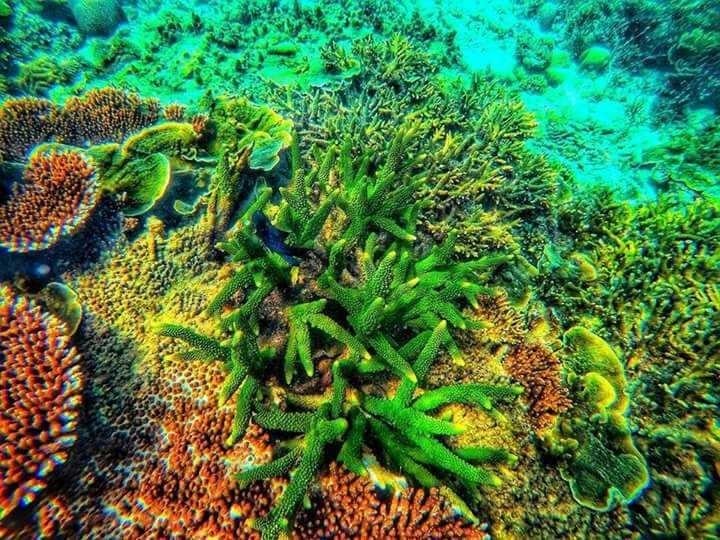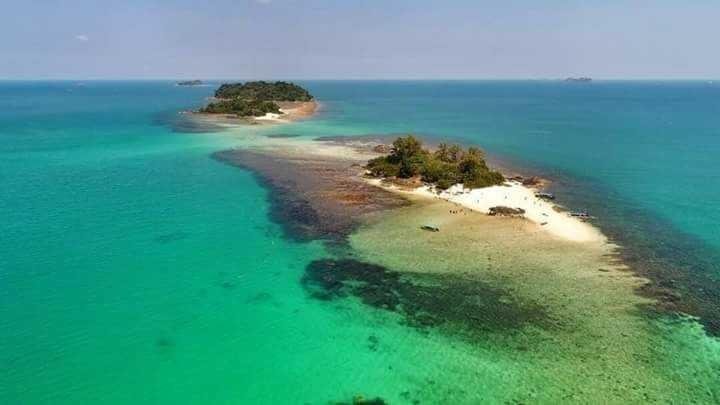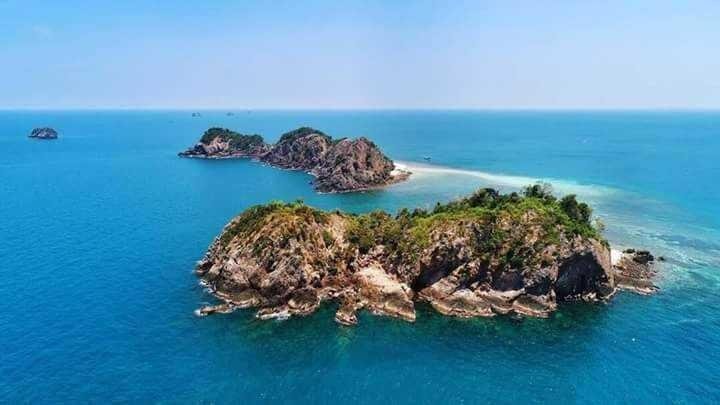
Coral reefs consist of two words, ie coral and coral. The terms coral and coral have different meanings. The term coral refers to a collection of animals. While the reef is a calcium carbonate structure (CaCO3) produced by corals. In English called coral reef.
Coral animals look like plants, when in fact corals are a collection of small animals called polyps. The person who first classified corals as animals is J.A. de Peysonell, a biologist from France in 1753. In scientific classification, corals are in the phylum Cnidaria, Anthozoa class.
There are two kinds of corals, namely hard coral and soft coral. Hard corals live in symbiosis with algae called zooxanthellae. These corals live in shallow waters where sunlight can penetrate well. Because zooxanthellae gain energy by the process of photosynthesis. Hard corals form reef structures and have hard bodies such as rocks. Soft corals are not symbiotic with algae, they look like plants. These corals can live in shallow waters and deeper waters.
Polyps are small animals that resemble sacks. On the lips of his body has tentacles to attract and catch prey. Polyps food is a plankton carried by ocean currents. Polyps absorb calcium carbonate from seawater and remove it in the form of a hard lime structure to protect its soft body.

Coral reefs are undersea ecosystems composed of a group of coral animals that form the structure of the carbonate calisum, a kind of limestone. This ecosystem is the habitat of many marine life. Coral reefs together with mangrove forests are an important ecosystem that is a warehouse of biodiversity at sea. In terms of biodiversity, coral reefs are touted as tropical forests in the oceans.
The coral reef ecosystem is a living habitat of a number of species of starfish, spawning, nesting and enlarging of fish children. In this ecosystem there is plenty of food for small fish and these small fish are prey to larger predators.
It is estimated there are more than one million species inhabit this ecosystem. Although it looks solid as rocks, this ecosystem is very vulnerable to environmental changes. The optimum temperature for coral growth ranges from 26-28 ° C.1 With temperature tolerance ranging from 17-34 ° C.2 Temperature changes over long periods can kill coral reefs. This ecosystem also requires clear waters, so the sun can penetrate to the deepest layers.


Globally coral reefs can be found in the tropics and sub tropics. Most are located in about 30º north and south of the equator. The spread covers an area in 100 countries with an area in the 1990s of about 600,000 km2. Currently an estimated 10 percent of its ecosystem is in a state of disrepair and some can not be renewed. If these conditions continue to be left in the next 20 years estimated damage will increase to 30 percent
From the map, the largest distribution is in the indo-pacific and atlantic regions. The indo-pacific region is the largest coral reef with the greatest diversity. In Great Barrier Reef Australia alone covers 200,000 km2. Other areas that have extensive coral reefs include red sea waters, the eastern and western Indian Ocean, the waters of Indonesia, Malaysia and the Philippines, and in the Pacific islands.
While in the Atlantic area of coral reefs only 1/20 than in indo-pacific. And the diversity is not too high. The dots are all around Bermuda and the Caribbean, then again around the coast of Brazil and West Africa.


let us preserve the coral reefs under our sea so that sustain and beautiful sustains always this beautiful earth. salam greetings nautical greetings ecosystem.

Very nice article you have there! But do not forget to cite your sources and credit your images when necessary
Yeah, you should definitely credit the authors when you are using images. Or it could be considered as plagiarism :)
Join me on Gaïa 🌍 Let's make our planet a better place to live